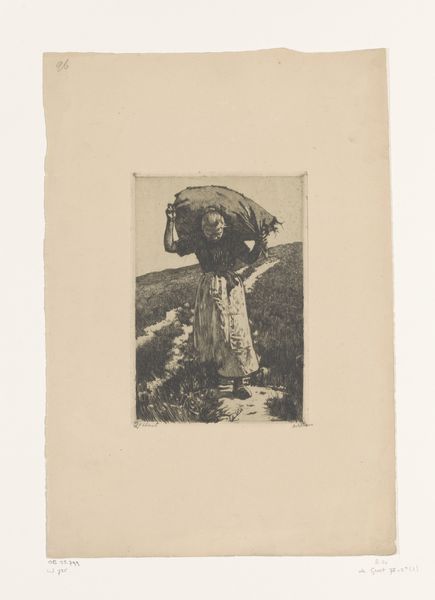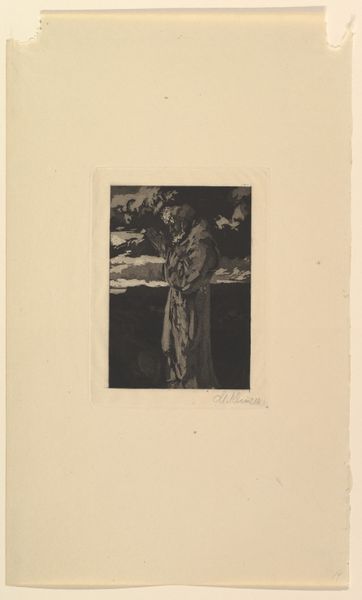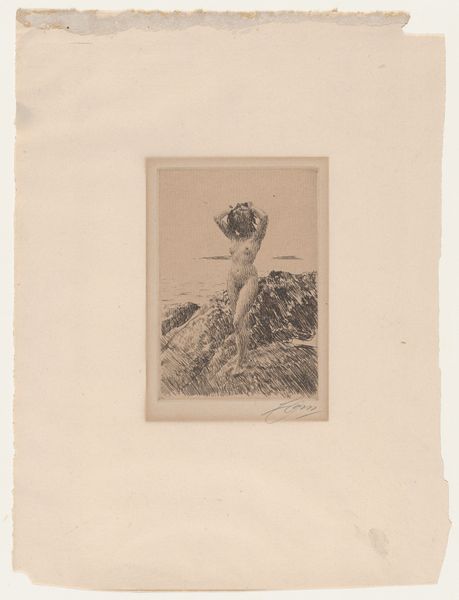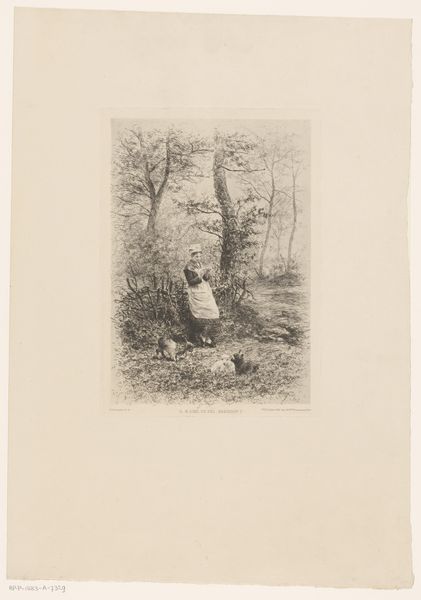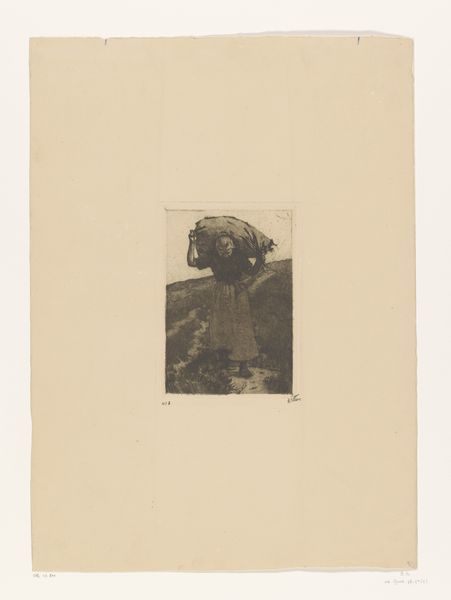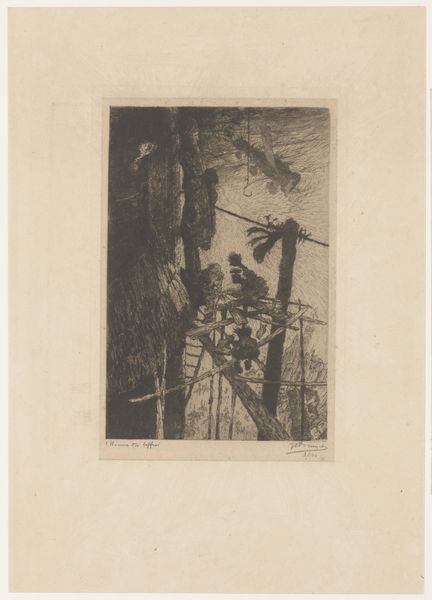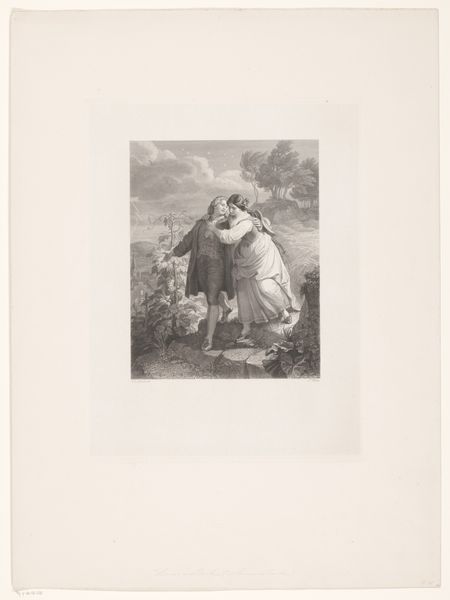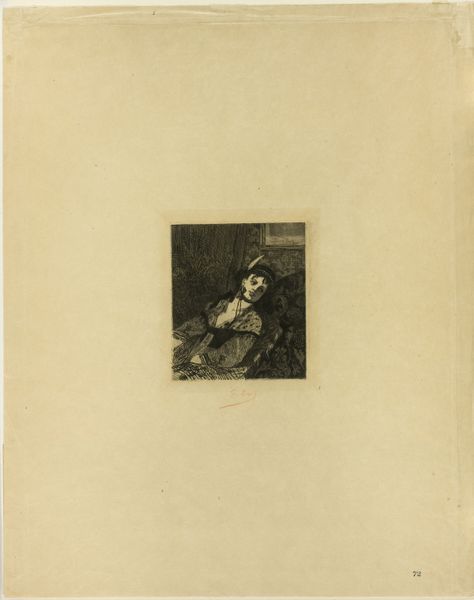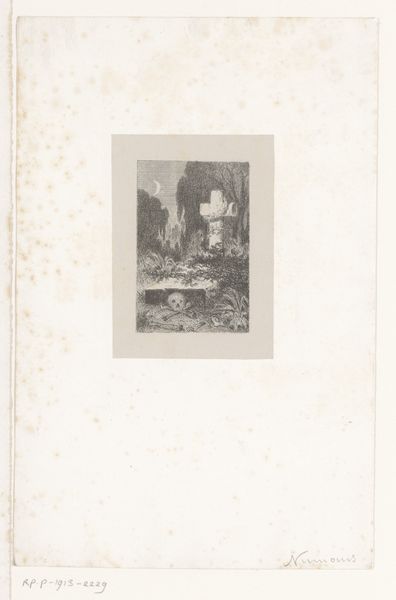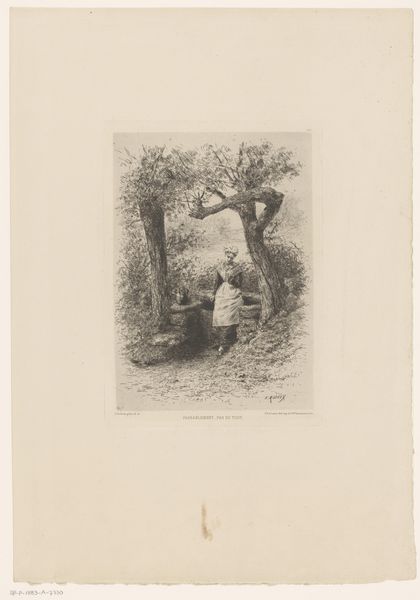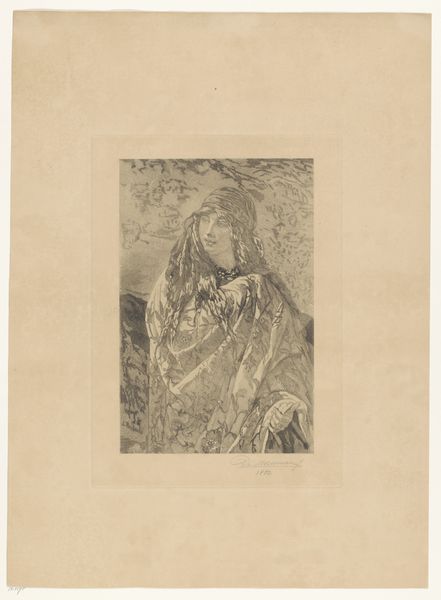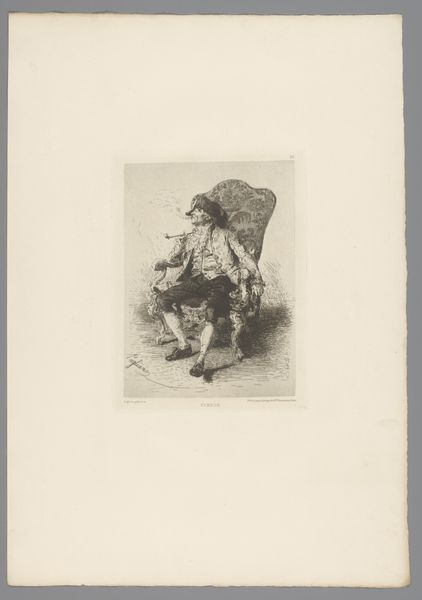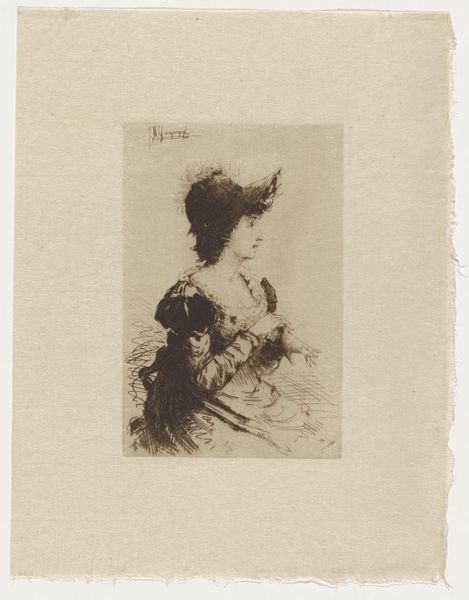
drawing, print, etching
#
portrait
#
drawing
#
dutch-golden-age
# print
#
etching
#
landscape
#
genre-painting
#
realism
Dimensions: height 200 mm, width 140 mm
Copyright: Rijks Museum: Open Domain
Curator: Willem Witsen created this etching, titled "Boerenvrouw draagt een zak op haar schouders," around 1897. It now resides in the Rijksmuseum collection. Editor: My initial impression is one of stoic resilience. The limited palette amplifies the harshness of the subject's burden and surroundings. The lines create a compelling textural feel that speaks to me about the nature of her task. Curator: The artwork reflects a broader artistic interest in depicting rural life and labor, as an important social context for artmaking. How do we see this work in relation to other contemporary explorations of class, identity and labor conditions? Editor: It’s interesting how the artist uses light and shadow to model the figure's form, and the dramatic, compressed perspective focuses on the physical weight borne by the woman. Compositionally, notice how the landscape inclines with the figure, thereby accentuating the feeling of upward straining motion. Curator: That connects with wider Dutch artistic themes of social realism at the end of the 19th century. Artists showed scenes of everyday life for social awareness. Witsen, however, moves between circles of the Dutch elite and portraying workers; how did he straddle those two different spheres? Editor: The lines of the etching emphasize form but seem to mask any distinctive individual traits; perhaps this communicates an idealization rather than an effort at pure documentary truth? We see this figure only through shape and shadow. Curator: The print medium also affects how it was originally perceived. Etchings facilitated broader distribution, making art accessible beyond wealthy elites. Who saw it originally, and how was that different to a painted gallery work displayed now in the museum? Editor: Considering your perspective, the accessibility offered by printmaking would seem a very direct way to communicate with the public and directly challenge conventions surrounding subject, taste, and display within more exclusive art settings? Curator: Exactly. Witsen actively pushed those boundaries! The piece serves as a document of those boundaries—and of the attempt to reshape artistic creation in Dutch culture at the time. Editor: Well, reflecting on its lines, scale and shading in tonal etching, I recognize my immediate impression still resonates: this small image continues to reflect significant force. Curator: For me, it's a reminder of how art engages and depicts important social changes in history.
Comments
No comments
Be the first to comment and join the conversation on the ultimate creative platform.
